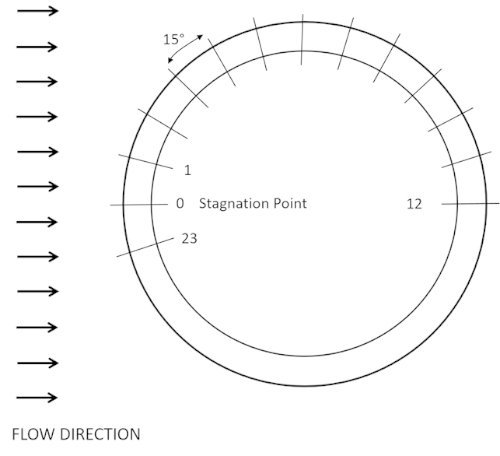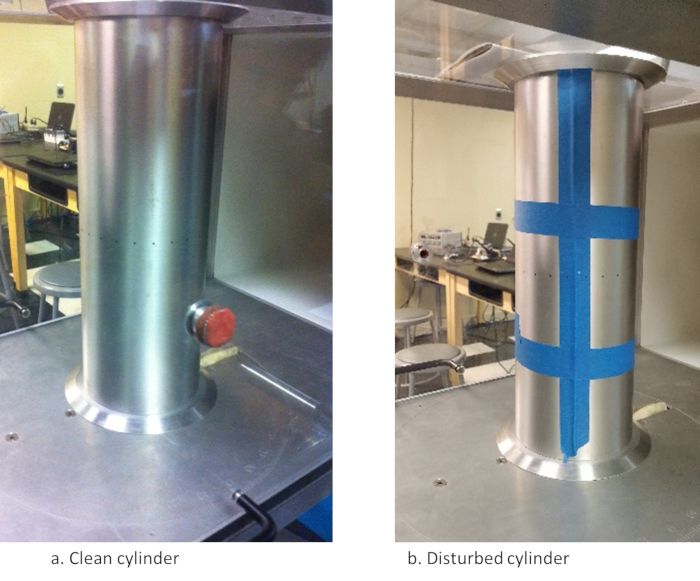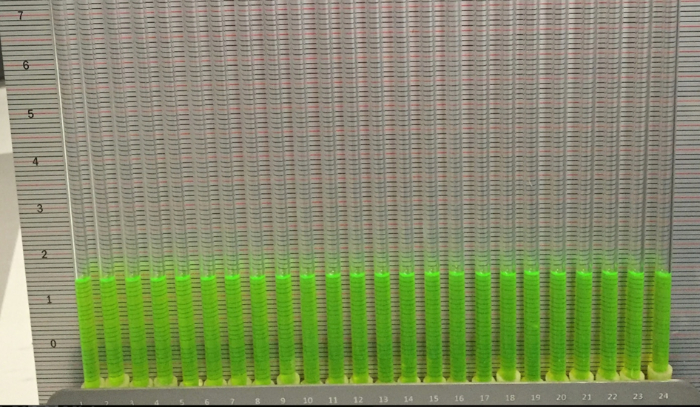Flux cylindrique croisé : Mesurer la distribution de la pression et estimer les coefficients de traînée
Vue d'ensemble
Source : David Guo, College of Engineering, Technology, and Aeronautics (CETA), Southern New Hampshire University (SNHU), Manchester, New Hampshire
Les distributions de pression et les estimations de traînée pour le flux cylindrique croisé ont été étudiées pendant des siècles. Par la théorie idéale de l'écoulement potentiel inviscide, la distribution de pression autour d'un cylindre est verticalement symétrique. La distribution de pression en amont et en aval du cylindre est également symétrique, ce qui se traduit par une force de traînée zéro-net. Cependant, les résultats expérimentaux donnent des modèles de débit, des distributions de pression et des coefficients de traînée très différents. C'est parce que la théorie potentielle inviscide idéale suppose le flux irrotationnel, signifiant la viscosité n'est pas considérée ou prise en compte en déterminant le modèle de flux. Cela diffère considérablement de la réalité.
Dans cette démonstration, une soufflerie est utilisée pour générer une vitesse spécifiée, et un cylindre avec 24 ports de pression est utilisé pour recueillir des données de distribution de pression. Cette démonstration illustre comment la pression d'un fluide réel qui circule autour d'un cylindre circulaire diffère des résultats prévus en fonction du flux potentiel d'un fluide idéalisé. Le coefficient de traînée sera également estimé et comparé à la valeur prévue.
Procédure
1. Mesurer la distribution de pression autour d'un cylindre
- Retirez le couvercle supérieur de la section d'essai d'une soufflerie et montez un cylindre en aluminium propre (d 4 po) avec 24 ports intégrés sur une plaque tournante (figure 3). Installer le cylindre de sorte que le port zéro est orienté en amont (Figure 4a).
- Remplacez le couvercle supérieur et connectez les 24 tubes de pression étiquetés 0 - 23 aux ports correspo
Résultats
Les résultats expérimentaux du cylindre propre et perturbé sont présentés dans les tableaux 1 et 2,respectivement. Les données peuvent être tracées dans un graphique du coefficient de pression, Cp, par rapport à la position angulaire, pour un flux idéal et réel, comme le montre la figure 6.

















